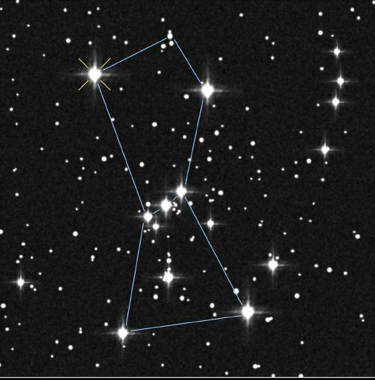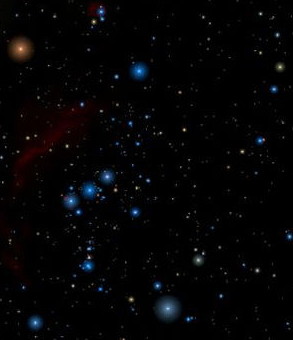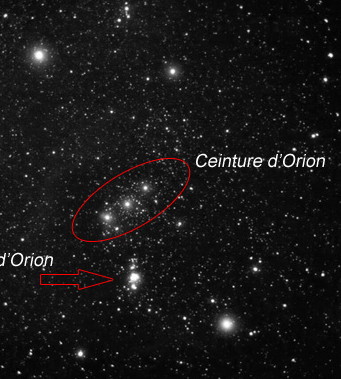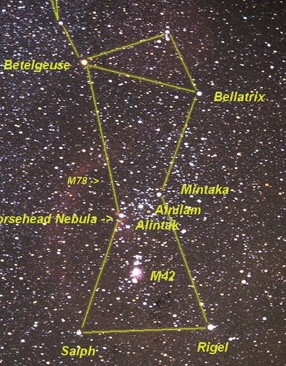 Science
Science
 Astronomy
Astronomy
 Universe
Universe
 Constellations
Constellations
 Orion
Orion
 Orion is perhaps the most famous of the 88 constellations in the night sky. It's likely the easiest to find for stargazers all over the world.
Orion is perhaps the most famous of the 88 constellations in the night sky. It's likely the easiest to find for stargazers all over the world.It is easily recognizable by his bright belt of three stars. In addition, his shoulder is marked by the red supergiant Betelgeuse (literally "armpit of the central one" in Arabic), and his left leg is marked by the blue-white supergiant Rigel.
It is on the celestial equator between Gemini and Taurus.
It is visible in the winter sky in the northern hemisphere from November thru February. Best viewing is at 9 PM in January.
It is best seen between latitudes 85 and -75 degrees. Its right ascension is 5 hours, and its declination is 5 degrees.
Orion is in the southern sky if you are in the Northern Hemisphere or the northern sky if you are in the Southern Hemisphere.
It was named after Orion, a hunter in Greek mythology (500 BC).
 There are two versions of the Orion story.
There are two versions of the Orion story.
In the first version, he was the son of the sea-god Poseidon (Neptune) and Queen Euryale of the Amazons. He inherited his mother's hunting talent and became an excellent hunter. Unfortunately, his ego was to be his undoing. In response to his boast that he could kill any animal in the world, he was killed by a scorpion.
According to the myth he was placed on the opposite side of the sky from scorpio so that they are never visible at the same time.
In the second version, he was first blinded by King Oenopian2 and then killed by Diana who was the 'virgin' goddess of hunting. She fell in love with Orion but her brother, Apollo, did not like this. One day, observing Orion wading through the ocean with his head just above the water, Apollo pointed it out to his sister and maintained that she could not hit that black thing on the sea.
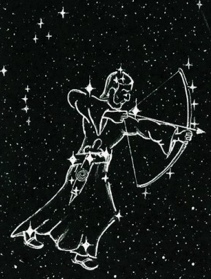 The archer-goddess discharged a shaft with fatal aim. The waves rolled the body of Orion to the land, and bewailing her fatal error with many tears, Diana placed him among the stars (Bulfinch's Mythology, 191-192).
The archer-goddess discharged a shaft with fatal aim. The waves rolled the body of Orion to the land, and bewailing her fatal error with many tears, Diana placed him among the stars (Bulfinch's Mythology, 191-192).
There is a third version which is a combination of the two.
See Amazing Space: Orion the Hunter constellation.
The Babylonian star catalogues of the Late Bronze Age (800 BC) name Orion "The Heavenly Shepherd" or "True Shepherd of Anu" - Anu being the chief god of the heavenly realms.
Some call him Orion the Archer and depict him with a bow instead of a shield.
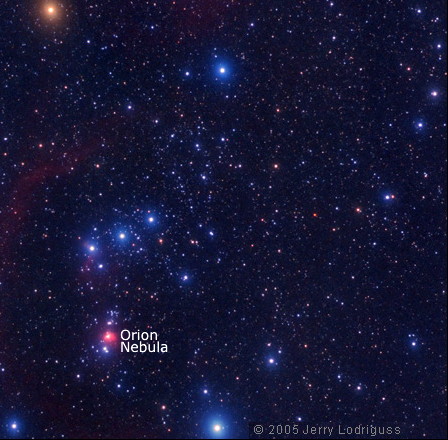
The Bible mentions Orion three times, naming it "Kesil". Job 9:9 ("He is the maker of the Bear and Orion"), Job 38:31-33 ("Can you loosen Orion`s belt?"), and Amos 5:8 ("He who made the Pleiades and Orion")
Archeologists show Orion connections in ancient structures:
Mainly objects laid out in the same relative positions as the stars in orion's belt, but sometimes going beyond that to include other stars in the constellation.
See: The Orion Zone
In ancient Egyptian religion the "sahu" was the incorruptible soul, but the god Sahu ("the hidden one") was also the personification of the constellation Orion.
According to ancients there are two "gates of heaven", where the sun crosses the Milky. One is The intersection between Scorpio and Sagittarius,were ophiuchus is located is known as the "Gate of the Gods". The galactic center lies visually from our solar system along a line One is in Gemini over the hand of Orion, the "Gate of Man", where the sun crosses in the summer solstice.. Thus Orion is correctly shown holding in his hand what we might call a 'stargate'.
Some objects associated with Orion include,
- The pyramids. See:
- The Orion Correlation Theory (OCT):
- ancient-wisdom.co.uk
- The New Orion Hypothesis
Orion - The Eternal Rise of the Sky Hunter - Thornborough Henges - North Yorkshire, England.
- ancient-wisdom.co.uk
- Wikipedia - Hopi Indian sites - Arizona
Ancient Aliens Orion, more than a constellation (ancient-code.com)
Global Orion Links: A Celestial Plan? (redicecreations.com)
Links:
Search for more
BBC - Constellations: Orion 'the Hunter'
Orion (constellation) - Wikipedia
The Zodiacal Sky: Aries, Taurus and Gemini
Louden Thomas Babineau-McBride - A star in Orion's arm named for my Grandson.
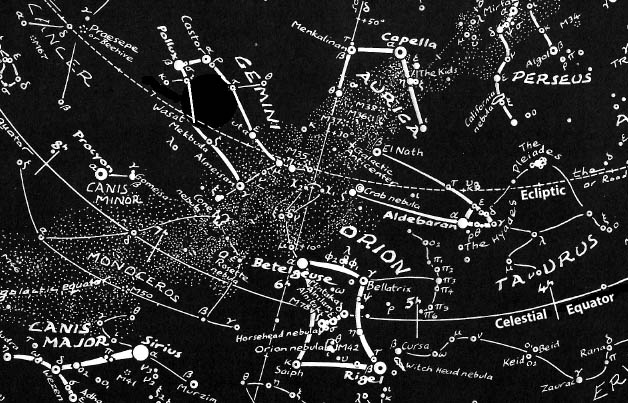
Source: 1985 Astronomical Calendar (Guy Ottewell)
h
